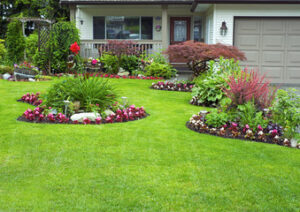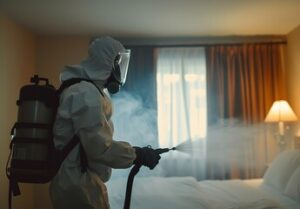Yes, civilians can legally own Humvees as long as they comply with local laws and regulations regarding emissions, lighting, and safety features. These vehicles can be purchased from authorized dealers and manufacturers.

The Defense Logistics Agency wants to make some of its surplus High Mobility Multipurpose Wheeled Vehicles (HMMWV) street legal. The move would recoup about $156 million at minimal risk to the taxpayer, according to an agency analysis. Keep reading the article below to learn more about Street Legal Humvee For Sale.
Despite being designed for off-road use, military Humvees can be made street legal with a few modifications. However, this process can be complicated and expensive. It also depends on your state’s laws and regulations. In some states, you may need a permit to drive your military vehicle on public roads. In other states, you may need to pass a safety and emissions test.
The first step is to obtain a title. You can do this by purchasing a vehicle from an online government auction site like GovPlanet. The auction house will provide you with a form SF97, which you can submit to your state DMV to get a title for the vehicle. The SF97 will also include an End-User Certificate, which confirms that the vehicle will not be exported overseas.
Another option is to purchase a Humvee from a private seller. However, it is important to check the vehicle’s history before making a purchase. You should always run a vehicle identification number (VIN) report to make sure the vehicle is not stolen. You should also get a Bill of Sale from the seller to verify the sale.
Once you have a legal vehicle, you can register it in a state with favorable Hummer street legal laws. This will save you time and money. You can also ask experts to handle the entire registration process for you. Contact them via email or call them to learn more about their services. They will help you get your vehicle registered and titled in no time!
It’s a commercial vehicle
The High Mobility Multipurpose Wheeled Vehicle, better known as the Humvee, has been an integral part of military operations since the 1980s. Its versatility and reliability makes it an ideal choice for disaster response. During an emergency, Humvees can transport supplies to stranded communities and serve as communication hubs. They can also ferry engineers to repair damaged infrastructure and clear debris. They can even be fitted with water tanks for delivering drinking water to those affected by the disaster.
Military Humvees are designed to be used in rough terrain and can handle extreme stress. They have a powerful eight-cylinder diesel engine and four-wheel drive, with 16 inches of clearance. They can climb a 60-degree grade, are difficult to flip, and can run in mud, snow, and sand. They are also easy to maintain, making them a great choice for off-road enthusiasts.
However, despite their tough exteriors, these vehicles are not designed for highway use. For this reason, they must be modified before they can be legally driven on the road. They must have proper turn signals, brake lights, and seat belts. They must also meet state emissions regulations. Texan entrepreneur Doug Smith has spotted an opportunity in the market and is now making Humvees street-legal.
The process of converting a Humvee for civilian use is relatively simple and inexpensive, but it can take up to eight weeks to complete. First, you need to purchase a government-owned military vehicle through an online auction site like GovPlanet. Next, you will need to submit an SF97 form to get a title for the vehicle. This document is required for all vehicle purchases. It is available for purchase through GovPlanet and costs $25. You will also need to complete an End-User Certificate, which is also required for all vehicle purchases.
Once you have your SF97, you will need to make modifications to your Humvee in order to pass inspection and register it with the state. This may include adding safety features, such as airbags and seat belts. You can also add a radio to improve navigation and communications, as well as a power steering system and a more comfortable interior.
It’s a pickup truck
The military vehicle that inspired the commercial Hummer has a new lease on life thanks to a Texas entrepreneur. Taking advantage of a public auction of thousands of surplus military vehicles, Doug Smith of Jetran has become one of the only people to make these off-road trucks street legal. His customers buy the HMMWVs from military auctions and then have them tweaked for road use, adding things like turn signals and brake lights.
The M998 is a two-door pickup with a removable hard top, and it boasts a robust diesel V8 engine, portal axles, and a 2-speed transfer case. These are all features that make the vehicle popular among off-road enthusiasts. But the real draw is the price, which is a fraction of what you would pay for a new car. Moreover, there’s no reserve.
To make a military Humvee street-legal, you need to get a bill of sale. You can purchase a bill of sale for a vehicle from an online government auction site like GovPlanet. You’ll also need to fill out a U.S. Government form SF97 to get the title. Once you have the SF97, it will take about eight weeks to receive a new clean title.
In addition, you need to check whether the vehicle is registered in a state with favorable laws for Humvees. If it isn’t, you can register it in another state with more lenient laws. This process is complicated and time-consuming, but it’s worth it if you’re interested in driving a military Humvee. If you’re a first-time buyer, you can hire an expert to handle the entire process for you. They will help you avoid any problems in the future and save you a lot of time.
It’s a scuba truck
The High Mobility Multipurpose Wheeled Vehicle (HMMWV, or Humvee) occupies an unusual place in American culture. It’s a military machine that made its combat debut in Panama and rose to prominence as the official transportation of the United States armed forces in the Gulf War. It also served as the basis for the Hummer H1 and starred in one of the silliest car chase scenes in movie history. It’s no wonder that this weird little truck is beloved by off-road enthusiasts, armor aficionados, and even Arnold Schwarzenegger.
A Humvee offers the rugged capability of a military vehicle combined with the spaciousness of a utility vehicle. However, there are practical considerations that could keep these vehicles from becoming a common sight on urban streets. For example, their size and fuel consumption are likely to raise eyebrows in many cities. Additionally, their high price tag and environmental impact may deter some buyers from embracing them as their everyday ride.
While most Humvees are used in the military, some are available for civilian use. These vehicles can be modified with a variety of accessories and upgrades to suit specific needs. For example, a new interior can make the vehicle more comfortable and attractive. Some of the most popular upgrades include seat foam, a headliner, and an upgraded audio system.
Another option is to install a suspension upgrade to improve the handling of the vehicle. This can be a challenging DIY project, but it is worth the effort if you want to enhance the performance of your vehicle. This upgrade can also help you get better gas mileage.
When it comes to installing an aftermarket suspension, it’s important to consider your skills and experience level before beginning a project. While many DIY projects are possible, some require more time and skill than others. If you’re unsure about your abilities, it’s best to consult a professional for assistance.
The popularity of street legal Humvees suggests that there’s a market for these rugged vehicles in the civilian world. They offer a unique combination of capability and style, making them ideal for off-road adventures and weekend recreations. However, the legal requirements for owning and operating these vehicles can vary widely from country to country. Therefore, it’s important to check with local authorities or a reputable dealer to ensure that you meet the requirements for your area.



